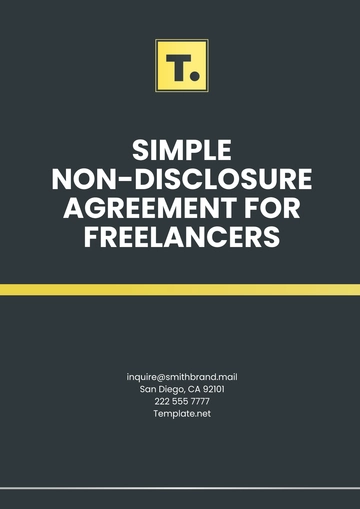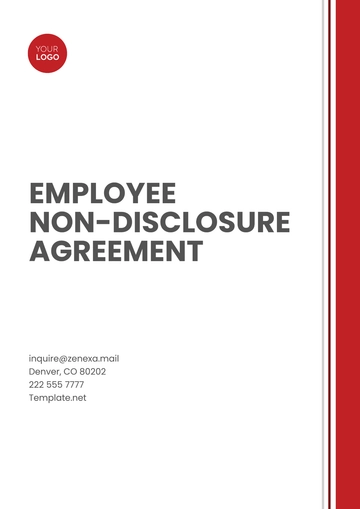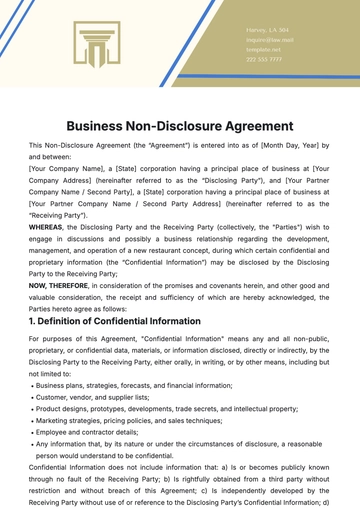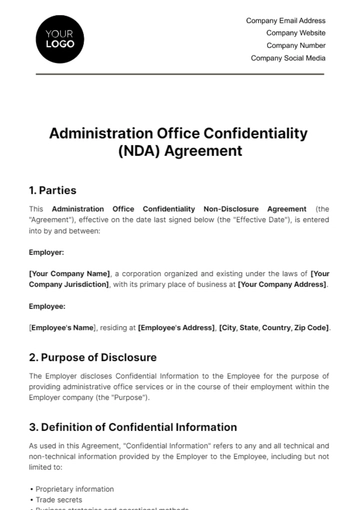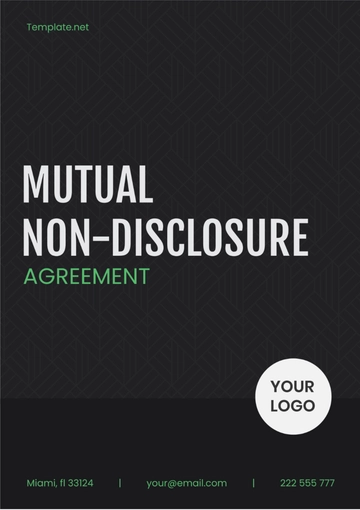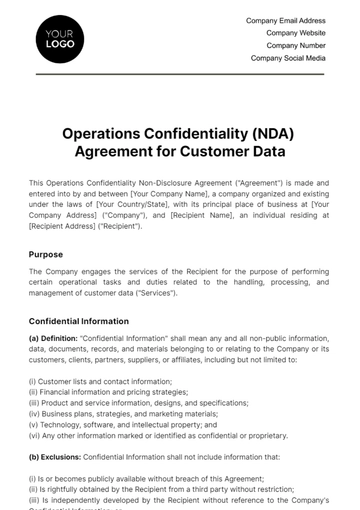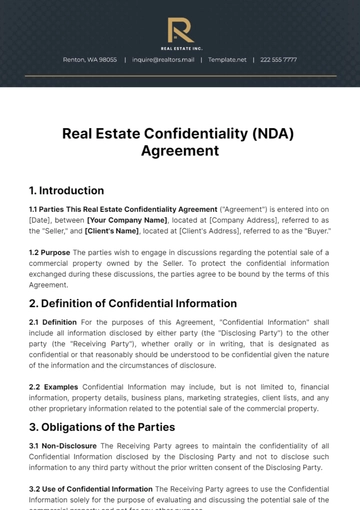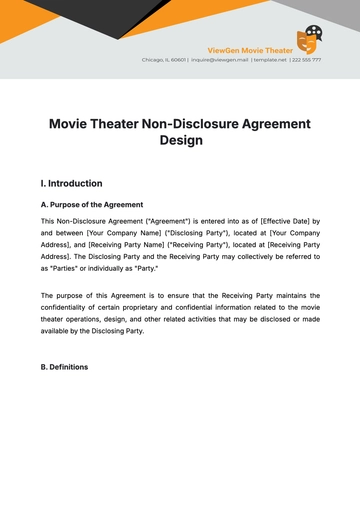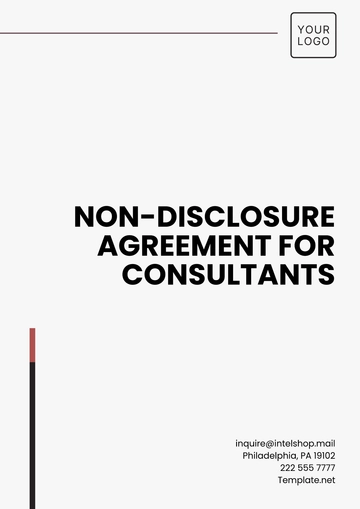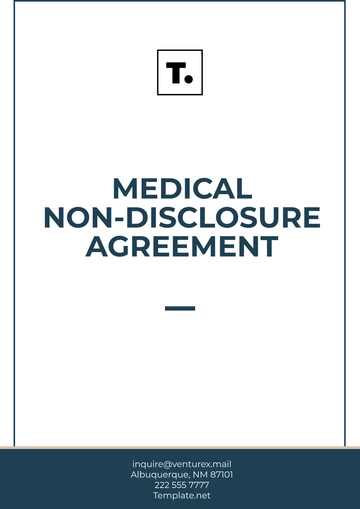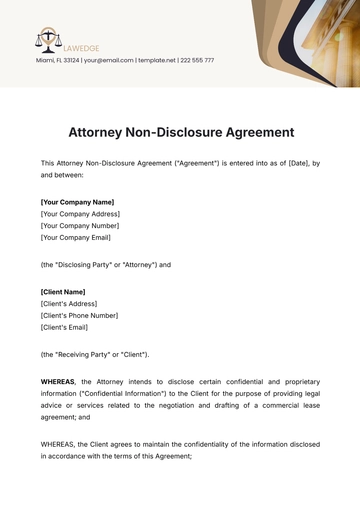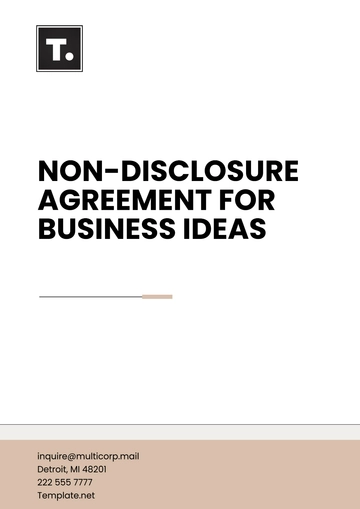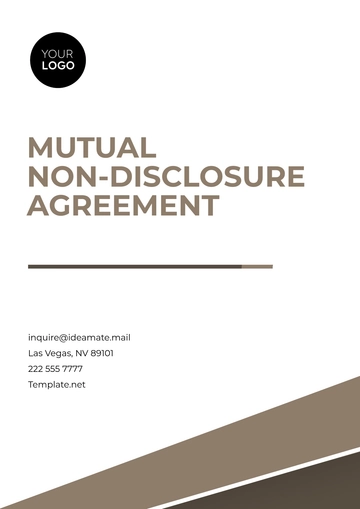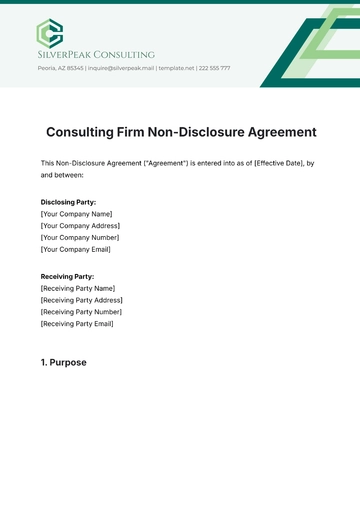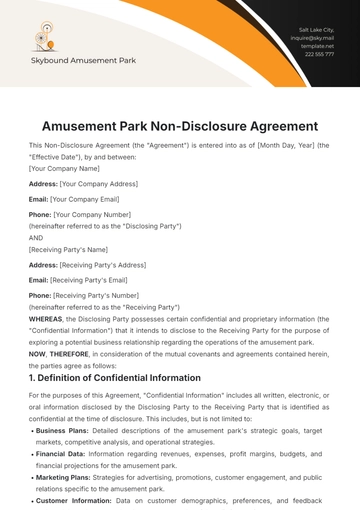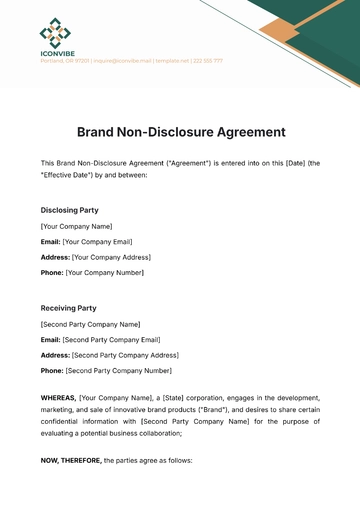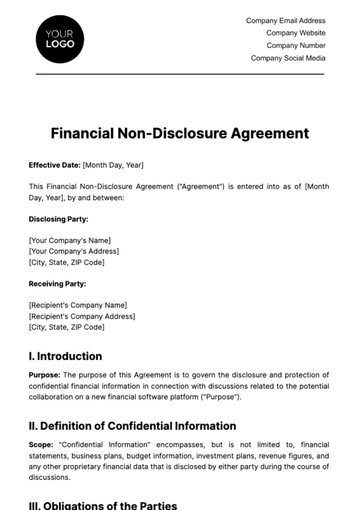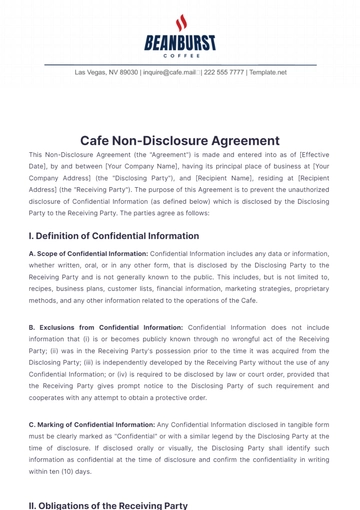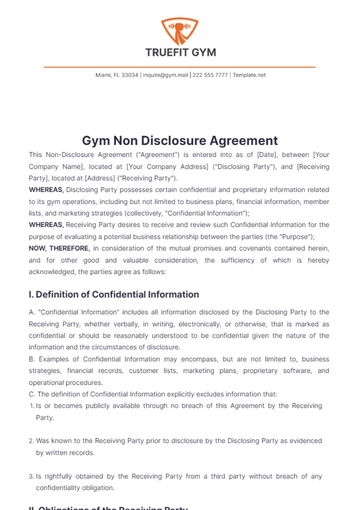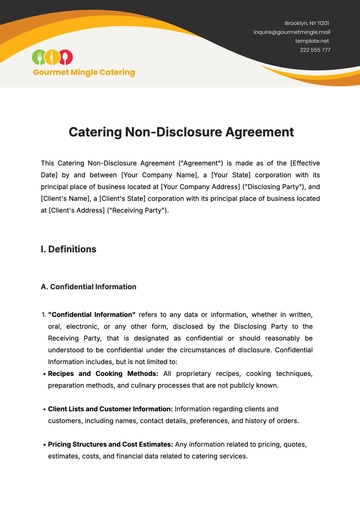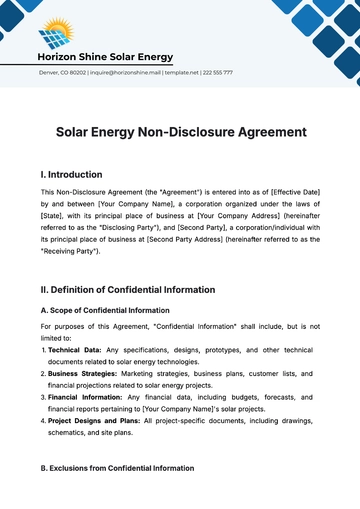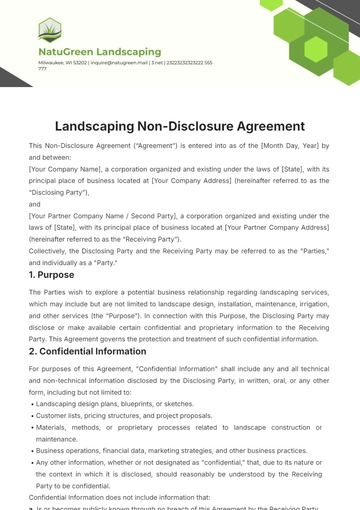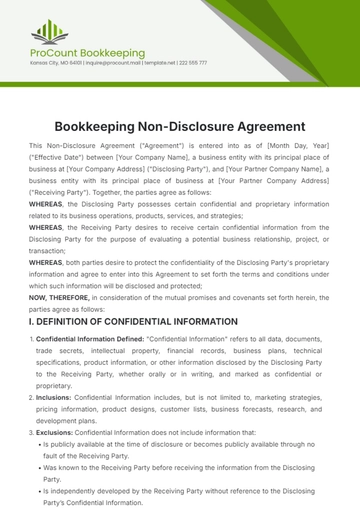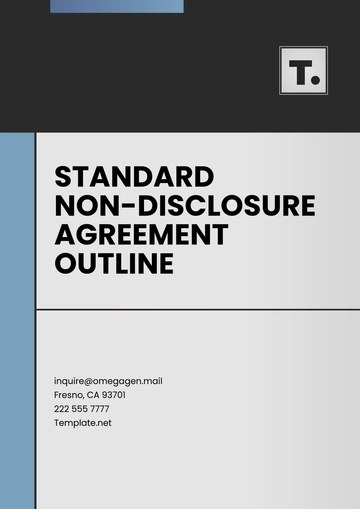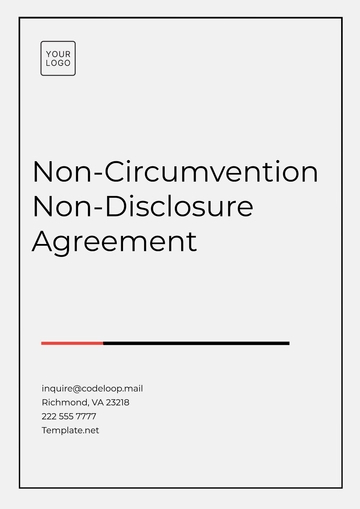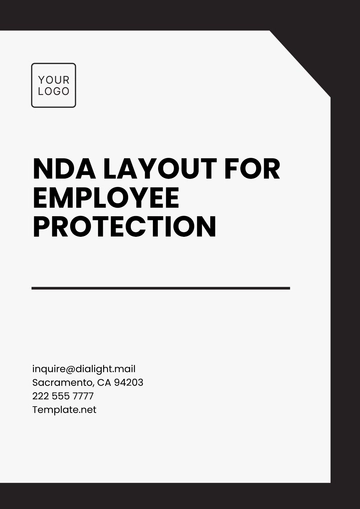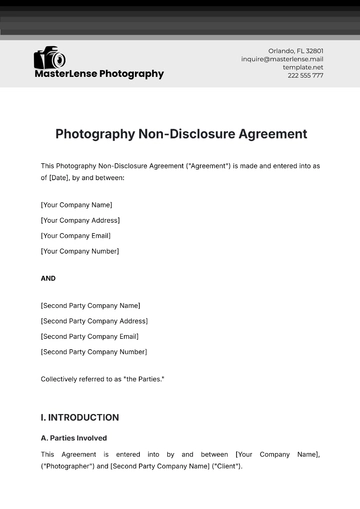Free Standard Non-Disclosure Agreement Outline
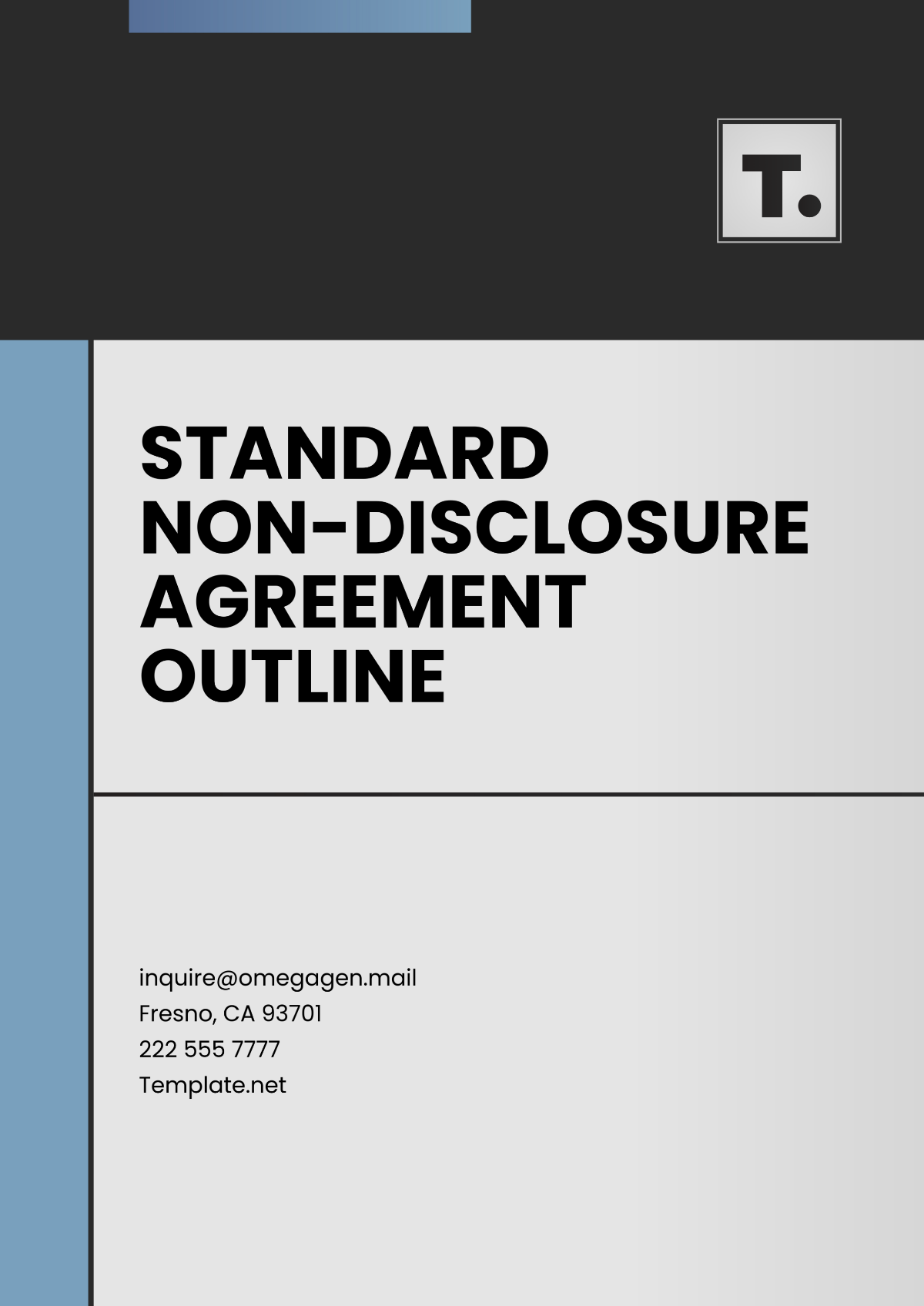
1. Title of Agreement
Clearly state that the document is a Non-Disclosure Agreement.
2. Introduction
Parties Involved: Identify the Disclosing Party and Receiving Party.
Purpose: Define the reason for sharing confidential information between the parties.
3. Definition of Confidential Information
What Constitutes Confidential Information: Specify the type of information considered confidential.
Exclusions: Define what is not considered confidential (e.g., public information, already known information, etc.).
4. Obligations of Receiving Party
Non-Disclosure: Outline the responsibility of the Receiving Party to keep the information confidential.
Limited Use: Specify that the information is to be used only for the intended purpose.
Protection: Require the Receiving Party to take reasonable measures to protect the information.
5. Duration of Confidentiality
Term of Agreement: State the duration the agreement is effective.
Confidentiality Period: Define how long the confidentiality obligations will last, even after the termination of the agreement.
6. Exceptions
Legal Requirements: Describe exceptions where disclosure may be required by law or court order.
Permission for Disclosure: Specify if and how written consent for disclosure can be obtained from the Disclosing Party.
7. Return or Destruction of Confidential Information
Return or Destroy: Requirement for the Receiving Party to return or destroy confidential information once the purpose has been fulfilled or at the end of the agreement.
8. No License
No Grant of Rights: Clarify that sharing confidential information does not transfer any intellectual property rights.
9. No Obligation to Enter into Further Agreements
No Further Obligations: State that the NDA does not obligate the parties to enter into any additional agreements.
10. Governing Law
Jurisdiction: Define the governing law and jurisdiction under which the NDA will be enforced.
11. Remedies for Breach
Legal Remedies: Describe the potential consequences and remedies in case of a breach, including legal actions and financial compensation.
12. Miscellaneous Provisions
Severability: Ensure that if any provision is found invalid, the remaining terms remain enforceable.
Entire Agreement: State that the NDA represents the full understanding between the parties, superseding prior agreements.
Amendments: Specify that any changes to the NDA must be made in writing and agreed to by both parties.
13. Signatures
Acknowledgment: Space for signatures from both parties to confirm their agreement.
Date of Execution: Include the date when the NDA is signed.
- 100% Customizable, free editor
- Access 1 Million+ Templates, photo’s & graphics
- Download or share as a template
- Click and replace photos, graphics, text, backgrounds
- Resize, crop, AI write & more
- Access advanced editor
Simplify confidentiality agreements with the Standard Non-Disclosure Agreement Outline Template offered by Template.net. Fully customizable, downloadable, and printable, this template ensures clear, professional, and legally binding agreements. Editable in our AI Editor Tool, it provides a structured framework to protect sensitive information. Streamline your NDA process with this reliable and efficient template.
You may also like
- Lease Agreement
- Non Compete Agreement
- Rental Agreement
- Prenuptial Agreement
- Non Disclosure Agreement
- Operating Agreement
- Hold Harmless Agreement
- LLC Operating Agreement
- Arbitration Agreement
- Purchase Agreement
- Residential Lease Agreement
- Executive Agreement
- Confidentiality Agreement
- Contractor Agreement
- Partnership Agreement
- Postnuptial Agreement
- Collective Bargaining Agreement
- Loan Agreement
- Roommate Agreement
- Commercial Lease Agreement
- Separation Agreement
- Cohabitation Agreement
- Room Rental Agreement
- Child Custody Agreement
- Employee Agreement
- License Agreements
- Settlement Agreement
- Joint Venture Agreement
- Indemnity Agreement
- Subordination Agreement
- Sales Agreement
- Agreements Between Two Parties
- Business Agreement
- Real Estate Agreement
- HR Agreement
- Service Agreement
- Property Agreement
- Agreement Letter
- Restaurant Agreement
- Construction Agreement
- Finance Agreement
- Marketing Agreement
- Payment Agreement
- Investment Agreement
- Management Agreement
- Nonprofit Agreement
- Software Agreement
- Startup Agreement
- Agency Agreement
- Copyright Agreement
- Collaboration Agreement
- Reseller Agreement
- Car Rental Agreement
- Cleaning Services Agreement
- Consultant Agreement
- Deed Agreement
- Car Agreement
- Equipment Agreement
- Shares Agreement
- Data Sharing Agreement
- Advertising Agreement
- School Agreement
- Franchise Agreement
- Event Agreement
- Travel Agency Agreement
- Vehicle Agreement
- Board Resolution Agreement
- Land Agreement
- Binding Agreement
- Tenancy Agreement
- Exclusive Agreement
- Development Agreement
- Assignment Agreement
- Design Agreement
- Equity Agreement
- Mortgage Agreement
- Purchase and Sale Agreement
- Shareholder Agreement
- Vendor Agreement
- Royalty Agreement
- Vehicle Lease Agreement
- Hotel Agreement
- Tenant Agreement
- Artist Agreement
- Commission Agreement
- Consignment Agreement
- Debt Agreement
- Recruitment Agreement
- Training Agreement
- Transfer Agreement
- Apprenticeship Agreement
- IT and Software Agreement
- Referral Agreement
- Resolution Agreement
- Waiver Agreement
- Consent Agreement
- Partner Agreement
- Social Media Agreement
- Customer Agreement
- Credit Agreement
- Supply Agreement
- Agent Agreement
- Brand Agreement
- Law Firm Agreement
- Maintenance Agreement
- Mutual Agreement
- Retail Agreement
- Deposit Agreement
- Land Purchase Agreement
- Nursing Home Agreement
- Supplier Agreement
- Buy Sell Agreement
- Child Support Agreement
- Landlord Agreement
- Payment Plan Agreement
- Release Agreement
- Research Agreement
- Sponsorship Agreement
- Buyout Agreement
- Equipment Rental Agreement
- Farm Agreement
- Manufacturing Agreement
- Strategic Agreement
- Termination of Lease Agreement
- Compliance Agreement
- Family Agreement
- Interior Design Agreement
- Ownership Agreement
- Residential Lease Agreement
- Retainer Agreement
- Trade Agreement
- University Agreement
- Broker Agreement
- Dissolution Agreement
- Funding Agreement
- Hosting Agreement
- Investor Agreement
- Memorandum of Agreement
- Advisory Agreement
- Affiliate Agreement
- Freelancer Agreement
- Grant Agreement
- Master Service Agreement
- Parking Agreement
- Subscription Agreement
- Trust Agreement
- Cancellation Agreement
- Horse Agreement
- Influencer Agreement
- Membership Agreement
- Vacation Rental Agreement
- Wholesale Agreement
- Author Agreement
- Distributor Agreement
- Exchange Agreement
- Food Agreement
- Guarantee Agreement
- Installment Agreement
- Internship Agreement
- Music Agreement
- Severance Agreement
- Software Development Agreement
- Storage Agreement
- Facility Agreement
- Intercompany Agreement
- Lending Agreement
- Lodger Agreement
- Outsourcing Services Agreement
- Usage Agreement
- Assurance Agreement
- Photography Agreement
- Profit Sharing Agreement
- Relationship Agreement
- Rent To Own Agreement
- Repayment Agreement
- Volunteer Agreement
- Co Parenting Agreement
- HVAC Agreement
- Lawn Care Agreement
- SAAS Agreement
- Work from Home Agreement
- Coaching Agreement
- Protection Agreement
- Security Agreement
- Repair Agreement
- Agreements License
